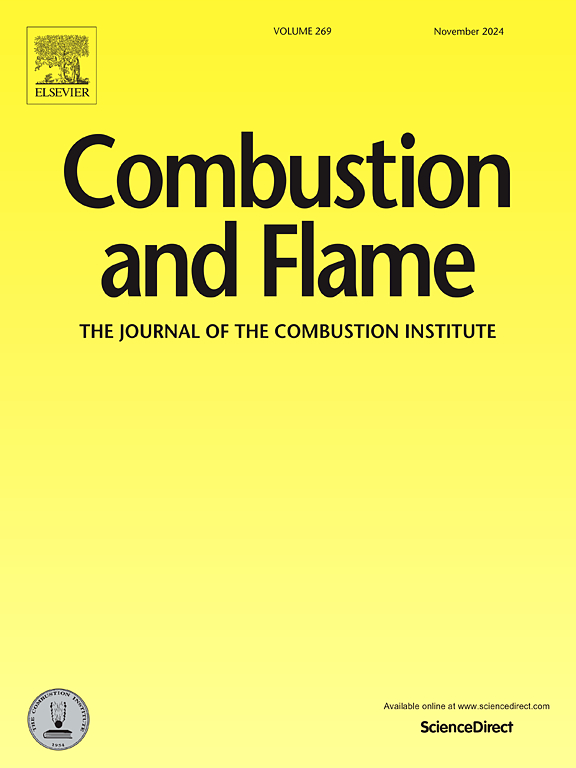Carbon monoxide emissions from combustion of non-carbon-containing fuels
IF 5.8
2区 工程技术
Q2 ENERGY & FUELS
引用次数: 0
Abstract
This short communication was motivated by measurements of non-negligible CO emissions from NH3-air premixed flames. Given that NH3 contains no carbon atoms, we initially thought this indicated some error or cross-sensitivity in the measurement system. However, as shown here, CO is indeed present in the exhaust emissions and originates from atmospheric CO2 conversion to CO during combustion. We also show that CO levels of order 10-200 ppm are possible under rich burning conditions. Given that rich staged burning is a promising approach for NOx control, particularly for NH3 combustion, these results show that some level of C1 chemistry is inherently present when utilizing real air, that models must include CO2 in air for capturing this CO production, and that practical combustors must consider CO burnout processes as well when utilizing rich-staged designs.
求助全文
约1分钟内获得全文
求助全文
来源期刊

Combustion and Flame
工程技术-工程:化工
CiteScore
9.50
自引率
20.50%
发文量
631
审稿时长
3.8 months
期刊介绍:
The mission of the journal is to publish high quality work from experimental, theoretical, and computational investigations on the fundamentals of combustion phenomena and closely allied matters. While submissions in all pertinent areas are welcomed, past and recent focus of the journal has been on:
Development and validation of reaction kinetics, reduction of reaction mechanisms and modeling of combustion systems, including:
Conventional, alternative and surrogate fuels;
Pollutants;
Particulate and aerosol formation and abatement;
Heterogeneous processes.
Experimental, theoretical, and computational studies of laminar and turbulent combustion phenomena, including:
Premixed and non-premixed flames;
Ignition and extinction phenomena;
Flame propagation;
Flame structure;
Instabilities and swirl;
Flame spread;
Multi-phase reactants.
Advances in diagnostic and computational methods in combustion, including:
Measurement and simulation of scalar and vector properties;
Novel techniques;
State-of-the art applications.
Fundamental investigations of combustion technologies and systems, including:
Internal combustion engines;
Gas turbines;
Small- and large-scale stationary combustion and power generation;
Catalytic combustion;
Combustion synthesis;
Combustion under extreme conditions;
New concepts.
 求助内容:
求助内容: 应助结果提醒方式:
应助结果提醒方式:


